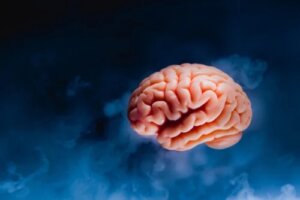What's the Reticular Formation and What Does it Do?

The reticular formation (RF) is a collection of nerve nuclei and fibers. In fact, it makes up the brainstem core (tegmentum) between the nuclei of the cranial nerves and the ascending and descending nerve pathways.
All the nuclei of the trunk belong to the reticular formation, except some of the cranial nerves. Nevertheless, it seems that the reticular formation is key when it comes to the expansion of the spinal interneuron system.
Experts aren’t completely sure what parts of the nervous system make up the reticular formation. However, they tend to think it extends from:
- The upper part of the cervical marrow.
- Brainstem.
- Midbrain.
- Diencephalon.
- Hypothalamus.
- Subthalamus.
- Thalamus.
It performs various roles, including:
- Coordination of head and body movements via stimulation and inhibition of voluntary and reflex movements.
- Breathing.
- Blood pressure.
- Sensory gate control. For example, particularly concerning pain.
- Psychological processes such as arousal or attention.
- Sleeping and dreaming.
- Muscle tone.
A very important component of the reticular formation is the raphe nuclei. In fact, the dorsal raphe nucleus is projected onto parts of the frontal, parietal, and occipital cortexes. Furthermore, in the function-related cerebellar cortical regions.
These projections release serotonin, which is a neurotransmitter derived from tryptophan.

The reticular formation
In reality, if you look at its physiology, the reticular formation is a multineuronal post-synaptic formation. It has axons that are transversely and longitudinally arranged. However, it doesn’t transmit any specific messages, such as sensitive, regional, or motor.
In fact, the reticular formation receives signals that it merges into a comprehensive form of diffuse information. It then transmits this information to the rest of the central nervous system (CNS). Arranged in accordance with the location of the nuclear groups, the reticular formation consists of:
The central nuclei
These occupy the top of the brainstem. They’re subdivided into:
- Ventral tegmental nucleus.
- Gigantocellular nucleus (upper bulb).
- Oral pontine and caudal pontine nuclei.
- Midbrain nucleus.
- Lateral and paramedian nuclei.
The lateral and medial nuclei are related to functions of the cerebellum. In fact, they form part of the reticular-brain-reticular circuit, where the fibers of the reticular formation that accompany the ventral spinothalamic fasciculus are projected onto the cerebellar cortex.
These fibers, along with the nuclei in general, play a role in the coordination of your reflexes and muscle tone.
Medial nuclei
They consist of:
- The grey matter that surrounds the cerebral aqueduct.
- The raphe nuclei.
- The dorsal tegmental nucleus of Gudden.
The function of the reticular formation
The reticular formation is a set of neurons and axons that associate and combine information from the nervous system. Furthermore, it plays a role in:
- Coordination of the functioning of the nuclei of the cranial nerves.
- Sending warning signs to sensory centers. In addition, it establishes relationships between regional centers and those that regulate the activity of neighboring or underlying motor centers.
- Stimulates higher centers. Consequently, they exert inhibitory or facilitator control over the central nuclei of the reticular formation.
- Cerebellar functions. It projects onto the paleocerebellum. Hence, it coordinates reflexes and muscle tone.
- Forms a link between the hypothalamus and the brainstem.
- Regulates pain perception.
What might happen in the raphe nucleus?
Arnold E. Eggers stated that increased neuron activity in the dorsal raphe nucleus could cause physiological stress.
In turn, excitotoxic damage occurs in the hippocampus. Consequently, this leads to a loss of normal negative feedback of the activity of the raphe nucleus. This imbalance can cause many disorders:
- Migraines (selective serotonin hyperactivity).
- Hypertension.
- Temporal lobe epilepsy (defective neural resonators).
- Schizophrenia.
- Post-traumatic stress disorder (excitotoxic damage followed by neurogenesis).
In conclusion, experts don’t yet fully understand the limits of the abilities of the reticular formation. However, they do know that it plays a role in the specific areas of the body we mentioned in this article and can lead to disorders.
All cited sources were thoroughly reviewed by our team to ensure their quality, reliability, currency, and validity. The bibliography of this article was considered reliable and of academic or scientific accuracy.
-
Ferraro, F. M., & Acuña, M. Formación Reticular y Fibras de Asociación del Tronco Encefálico.
-
Balcells, M. (2015). Aspectos históricos sobre la anatomía de la formación reticular.
-
Puri, B. K. (2016). The effects of stress on the dorsal raphe nucleus of the reticular formation and its role in the aetiology of disparate medical and neuropsychiatric disorders.
This text is provided for informational purposes only and does not replace consultation with a professional. If in doubt, consult your specialist.








